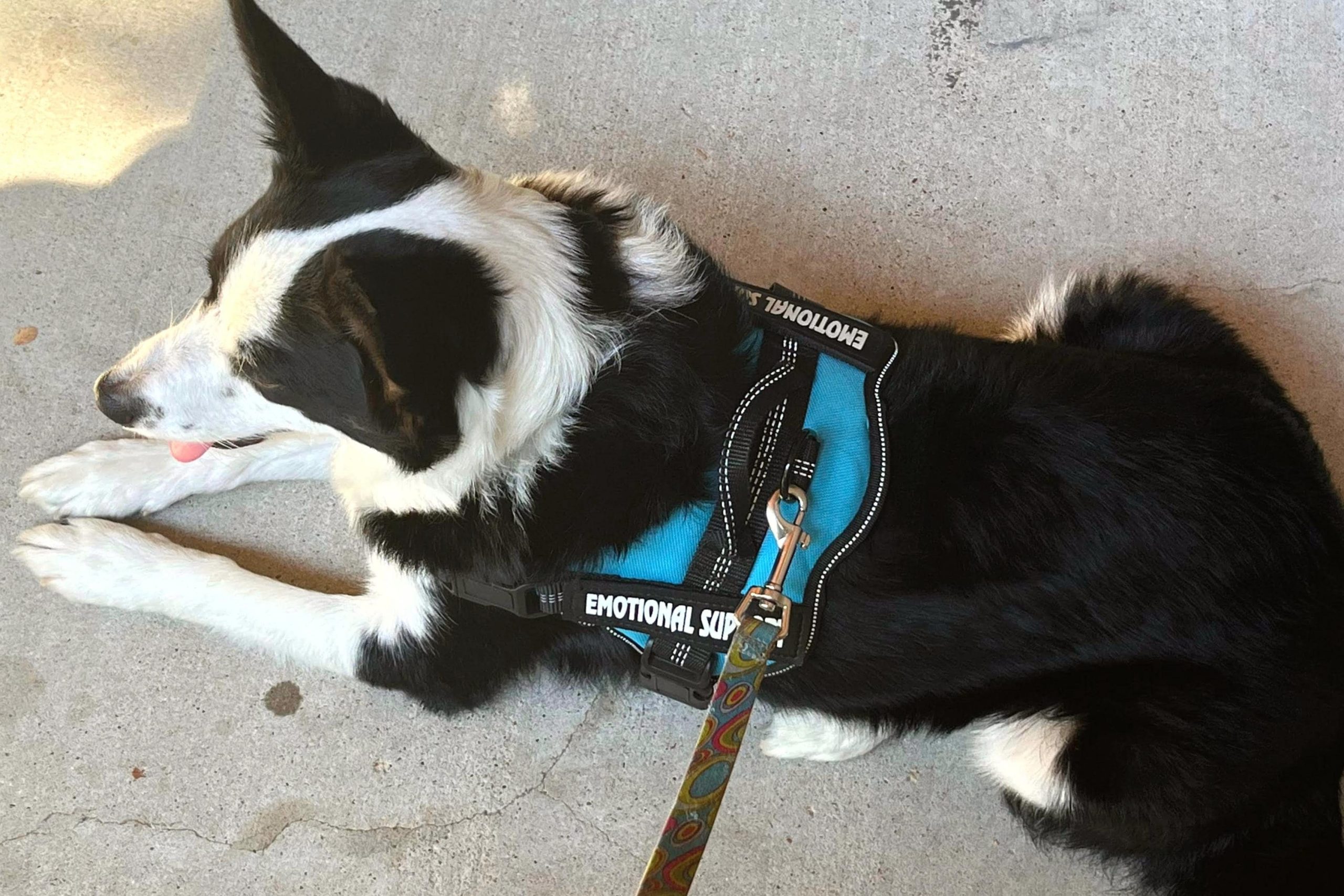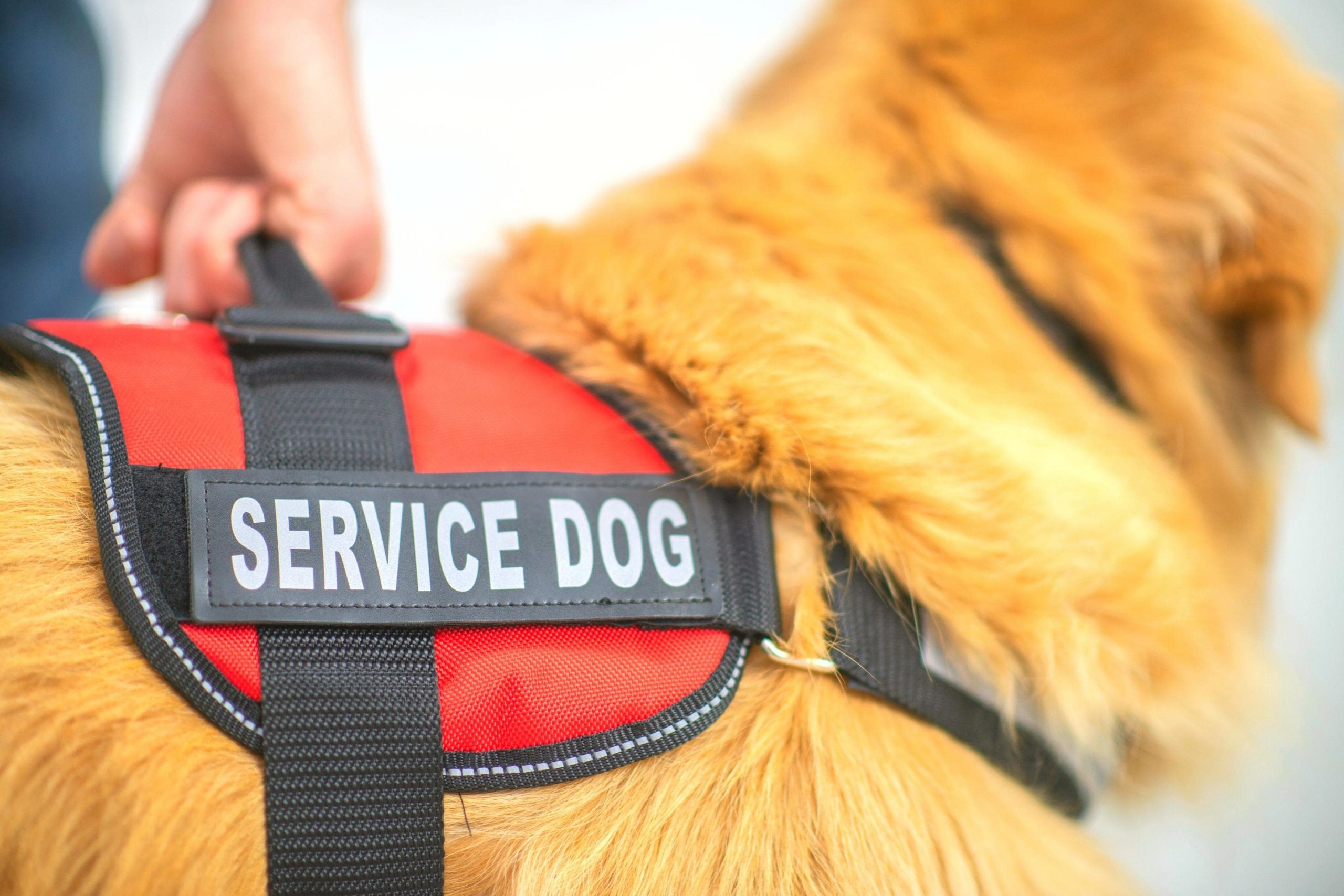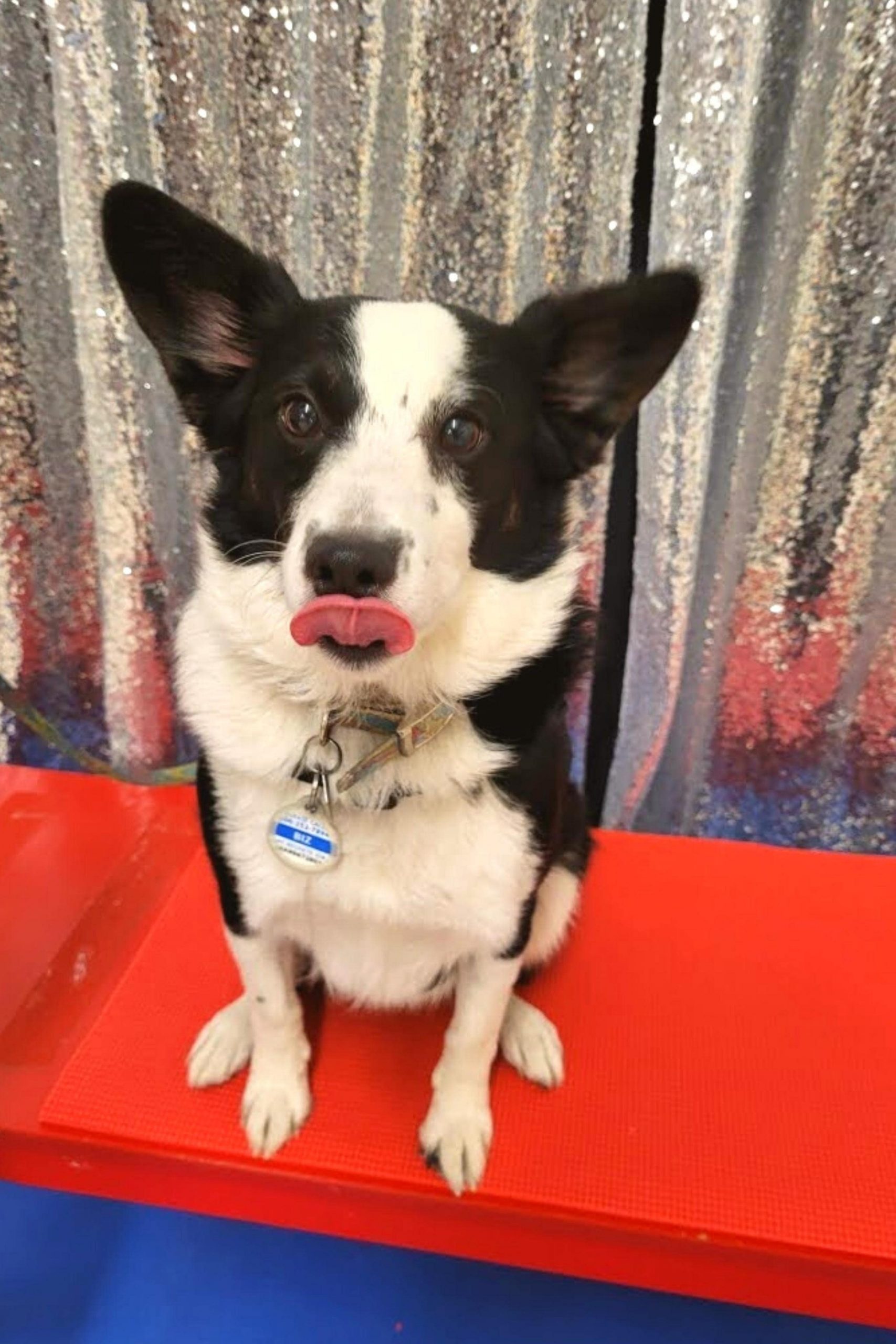
I currently have the most spectacular ESA (Emotional Support Animal). He is a border collie/ papillon mix named Biz. Aka the Notorious B.I.Z. AKA getting down to BIZness. He’s amazing and awesome and very popular at my school. I got him during covid and at first it was a challenging friendship. I’ve never had a dog that came to me as a puppy. And we both realized we needed to learn about navigating the ins-and-outs of a very energetic, very charismatic dog in my house. He also never lived in a house before so this was also a new territory.
After a couple weeks we settled into a terrific relationship and here we are almost two years later spending quality time together on the couch, on the bed, outside, in the car, at work, and all the other fun places he likes to go with me.
Like most people, living during the covid-19 global pandemic was a hard time for me emotionally. I definitely would say that my anxiety kicked it up a notch and having busy around for support made things significantly easier. He has the most astute ability to discern when someone is struggling emotionally. He will walk over to them and sit at their feet, he will nudge their hands with his nose and he will demand their attention in a way that is so accurate in his interpretation of their needs that it’s uncanny.
So of course I’ve had him certified as an ESA dog so that I can take him places to provide emotional support for myself and others. He started coming to school with me once a week. We would visit with the nurse and the other administrative staff. You can’t help but smile when you see this dog come by.
We then started visiting all the classrooms and talking to the students about what the differences are between a service dog and an ESA animal. We’ve talked about health and safety around dogs and other animals and how you should always ask an owner before you approach an unknown animal. We talked about the appropriate way to pet an animal. And sometimes answer really weird questions like “why is his poop brown”?. LOL
Make No Bones About It, There is a Difference Between Service Dogs and ESAs
Certapet.com outlines the following types of support animals
Service Animals. Individuals who are blind, deaf, restricted to a wheelchair, or suffer from seizure disorders can benefit immensely from the aid of a service animal. Service animals are dogs or miniature horses that are specially trained to perform tasks and recognize medical conditions.
Emotional Support Dogs and Other Animals (ESA). ESAs are more specifically chosen as companions to individuals who are psychologically or emotionally disabled. These companions can range from a dog, a cat, or even a miniature horse.
ESAs are not trained to perform tasks or recognize particular signs or symptoms but are distinguished by the close, emotional, and supportive bond between the animal and the owner.

Psychiatric Service Dogs. These dogs have the same legal protection as service animals. They also undergo intensive training to help people with disabilities. Examples of people who these dogs help are people suffering from post-traumatic stress disorder (PTSD), manic depression or panic attacks. Remember, a disabled person might not be in a wheelchair. Their mental health is the problem, and you can’t always see it.
These different types of support animals have their own set of licensing standards and rights and regulations as stated by the government.
Service Dogs Are Not Pets. Psychiatric services dogs have ALL the same rights as a service dog. They have travel rights, housing rights, educational facility rights and public access rights all outlined by the Americans With Disabilities Act.
Psychiatric service dogs provide a service to the following (but not limited to)
Social Anxiety Disorder, Postpartum Depression, Depression, Phobias and Fears, General Anxiety Disorder, Panic Disorder, Bipolar Disorder, Obsessive Compulsive Disorder, Post Traumatic Stress Disorder, Seasonal Affective Disorder
You may see a veteran with a service dog who is there to provide support before a PTSD attack occurs. They are trained to identify triggers and signs from their owner that their mood may be changing.
Certifying your pet as an Emotional Support Animal
Can I really bring my ESA peacock on an airplane? UMMMM Maybe. Emotional support animals are covered by 2 laws one of them being through the Fair Housing Amendment Act of 1988 (FHA). This law enables the pet owner the opportunity to not be rejected housing for the purpose of your ESA needing to be by your side. It also requires the renters to waive any pet deposits or other fees upfront. (It’s like you didn’t have an animal at all) However, it does NOT cover you being responsible for any damage your animal might cause to the rented property.
Basically, verified ESA owners (i.e. owners who have an ESA letter written by a Licensed Mental Health Professional cannot be denied housing, just as individuals in a wheelchair or with a disability cannot be denied housing based on their condition.
The second law that ESA’s are entitled to is the Air Carrier Access Act of 1990 and works with the Department of Transportation to provide rights to an owner who has as ESA during travel.
According to this act, airlines are not allowed to refuse transportation , limit or require advanced notice before offering service to individuals who are disabled.
Airlines may require advanced notice for certain accommodations, such as medical equipment or electric wheelchairs, and may require notice for ESAs specifically, depending on the individual airline guidelines.
The Air Carrier Act, however, still requires that airlines accommodate ESA owners who have verified identification, which is your ESA letter and possibly additional forms based on the specific airline.
This is not an automatic pass to GO and your chance to collect $200. AIrlines now have their own set of guidelines before they will allow an ESA to travel with you. You cannot just show up and expect an easy travel day. You must check each airline’s rules and guidelines before you travel.
Don’t be fooled by all these websites that offer you to pay a certification fee for your dog to be licensed as an ESA. That just doesn’t have to happen. As long as you have a letter from a licensed mental health professional that states your mental health condition and that you are under their care and treatment that is basically all you need to cover your ESA. I write letters for clients of mine in order for them to receive access to housing and travel. I recommend they purchase an ESA harness that shows their animal is a support animal and makes them look more professional.
I will say it again, DO NOT PAY FOR AN ESA REGISTRY. It is NOT required.

It’s a Dog Eat Dog World When It Comes To Navigating the Differences
Service dogs (or the occasional miniature horses) are animals that have received intensive training to perform specific tasks for people with a range of (mostly physiological) disabilities. A common example of a service dog is a seeing-eye dog that assists a visually impaired person. Another example is a guide dog for someone with auditory impairments.
Service animals have a legal right to public access and public accommodation. This means that they are allowed to accompany their owner in most places where the general public is allowed.
A Service Dog receives extensive training to help individuals with tasks or activities that their disability limits or prevents them from doing on their own.
Under the Americans with Disabilities Act (ADA), service dogs can accompany their owners in a wide range of public areas because of the tasks they do.
One of the most common types of service dogs is a seeing-eye dog for the visually impaired. But there are SO MANY other types of service dogs out there. There are Hearing dogs, Diabetic Alert dogs, Mobility Assistance dogs, Seizure Response dogs, Autism support dogs, allergy detection dogs, and psychiatric service dogs for things like PTSD.
Most of these types of service dogs are pretty self-explanatory. But the training and the expert services these dogs provide is just simply fascinating. For example, Dogs are trained to identify when their master has a change in their blood sugar levels and can notify their owner prior to any type of diabetic emergency that might occur. How a dog can be trained to queue in on those types of changes is just absolutely mind-boggling.
Can I Pet Your Dog? NO!!!! Know the etiquette of owning an ESA
There’s an etiquette that should be followed when around a person who has a service dog or an ESA pet. Just like in any situation you should never walk up to anybody else’s animal leashed or Unleashed and try to pet them. Service dogs are working dogs. Their job is to make sure that their owner is healthy and safe at all times. If you distract the dog and anyway it may be potentially hazardous to their owner.
When I bring my ESA dog to school I go into all the classrooms and talk to students about approaching any kind of an animal. We discussed Animal Health and animal safety and we also talked about what happens if you are approached by a service dog or an ESA and their owner is not with them.
It’s also kind of a no-brainer but you should never offer food or treats or snacks to a service animal or ESA. Again they are serving a purpose to their masters and need to not be confused or distracted by you and your goodies.
Yes I know animals are adorable and we all want to hug them and love them and call them George but we have to be respectful of the job that the animals are doing just like we would never interrupt a police officer who’s trying to direct traffic because we want a hug. LOL
Most service dogs will be wearing some kind of a harness or other identifying material that lets you know that you need to avoid that animal and let them do their job. Most places of business are not allowed to ask what your service dog is for and why you need it. Your dog’s vest or harness identifies them with the proper certifications.
However there are a lot of people out there who will buy a service dog or emotional support animal harness off of the Internet and try to get away with taking their pet everywhere they go.
This is unacceptable and it actually harms the rest of the community who truly needs the services in public. When other people abuse and take advantage of

the situation it definitely makes it more difficult for the people who are legitimately bringing their animal with them in public for a physical or mental health need.
Hopefully this blog gives you some insight into the differences between a service dog and ESA. Our country has come a long way when it comes to supporting persons with disabilities or special needs and service dogs and ESA are just one way that we are working together to create a better world for us all.
